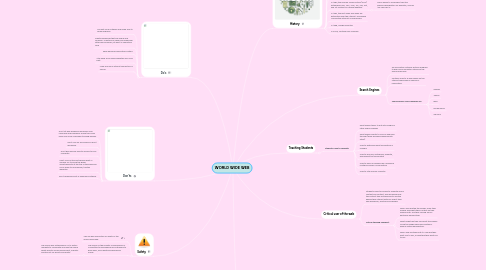
1. Do's
1.1. Use anti-virus software and make sure to renew regularly.
1.2. Create passwords that are unique and complex- a mixture of upper and lowercase letters and numbers, at least 10 characters long.
1.3. Keep personal information limited.
1.4. Stay away from shady websites and “click bait”.
1.5. Make sure your Internet connection is secure.
2. Don'ts
2.1. Don’t let web browsers remember your username and password. Doing this could leave you more vulnerable to being hacked.
2.2. Don’t click on any email you don’t recognise.
2.3. Don’t give anyone remote access to your computer.
2.4. Don’t click on the first search result in Google. Try to avoid the green advertisements at the top of the page and scroll down to find familiar, trusted websites.
2.5. Don’t download illicit or unknown software.
3. Safety
3.1. This link has information of safety of the World Wide Web:
3.2. The Office of the eSafety Commissioner is committed to empowering all Australians to have safer, more positive experiences online.
3.2.1. The Office was established in 2015 with a mandate to coordinate and lead the online safety efforts across government, industry and the not-for profit community.
4. History
4.1. In 1969, ARPA goes online in December, connecting four major U.S. universities.
4.2. In 1972, Electronic mail introduced by Ray Tomlinson
4.3. In 1982, the word “Internet“ is used for the first time.
4.4. In 1983, the Domain Name System (DNS) establishes .edu, .gov, .com, .mil, .org, .net, and .int system for naming websites.
4.4.1. This is easier to remember than the previous designation for websites, such as 123.456.789.10.
4.5. In 1992, the first audio and video are distributed over the Internet. The phrase "surfing the Internet" is popularised
4.6. In 1998, Google invented
4.7. In 2005, Youtube.com launches
5. Search Engines
5.1. An information retrieval system designed to help find information stored on the World Wide Web
5.2. Contains links to all web pages on the Internet which help in search of information.
5.3. Some popular search engines are:
5.3.1. Google
5.3.2. Yahoo!
5.3.3. Bing
5.3.4. DuckDuckGo
5.3.5. Ask.com
6. What is the World Wide Web
6.1. What is the world wide web? - Twila Camp
7. Teaching Students
7.1. Students need to navigate:
7.1.1. What search terms to put into Google or other search engines
7.1.2. What search results to click on and read through (while avoiding inappropriate sites!)
7.1.3. How to determine what information is credible
7.1.4. How to process, synthesise, evaluate, and present the information
7.1.5. How to back up research by combining multiple sources of information
7.1.6. How to cite sources correctly
8. Critical user of the web
8.1. Students need to be able to evaluate online content and contact, and recognise how the content they are exposed to and the people they interact with can affect their own behaviour, emotions and beliefs.
8.2. Critical thinking checklist:
8.2.1. Who? Who posted the image? Were they reliable and what other content do they usually post? Are they coming from a particular perspective?
8.2.2. What? What did they say about the image? Could the image have been edited or show a limited perspective?
8.2.3. Why? Why did they post it? How did they want you to feel, or what did they want you to do?
